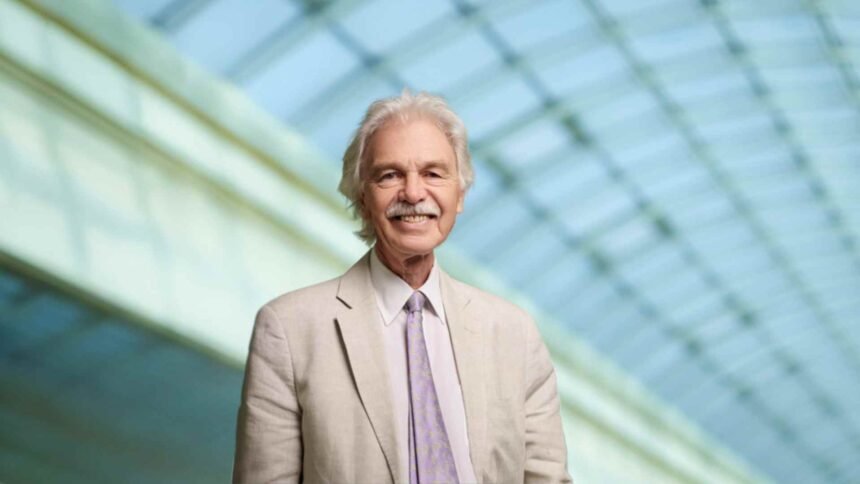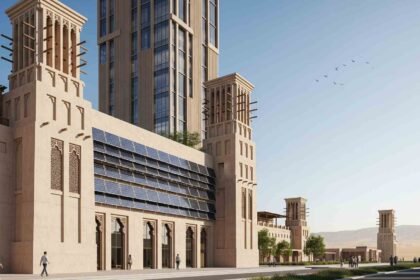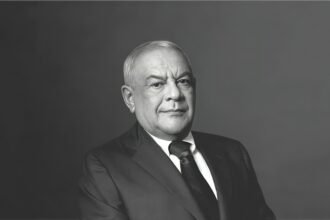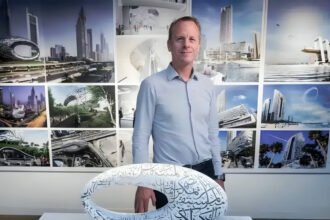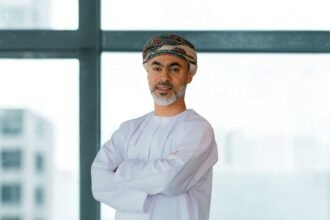In the vibrant heart of the Middle East, where tradition and modernity intertwine, Brian Johnson stands as a visionary architect whose work has defined the region’s skyline. As Chairman of Godwin Austen Johnson (GAJ), a leading UK-based architectural and design firm, Johnson has spent over four decades crafting buildings that blend cultural heritage with contemporary innovation. His journey, marked by resilience and creativity, has left an indelible mark on the United Arab Emirates and beyond.
Born in the United Kingdom, Brian Johnson launched his architectural career in London in 1973. At the age of 25, he and his wife made a bold decision to seek opportunities abroad, choosing Dubai as their destination in 1975. At the time, Dubai was a burgeoning city, a vast desertscape brimming with potential. Johnson joined a small architectural firm, but within three months, the principal’s departure thrust him into a leadership role. Seizing the opportunity, he partnered with his former London colleagues to establish a new practice, marking the start of his deep connection with the region.
For 14 years, Brian Johnson immersed himself in Dubai’s evolving landscape, working on projects like the Jumeirah English Speaking School, Dubai College, and infrastructure for the Dubai police force. Reflecting on his early days, he once shared, “I was 26, sitting there talking to all these worthies and governors about the school, and they’re listening to me. It was quite interesting for me.” His ability to earn trust at a young age set the stage for his future achievements.
Founding Godwin Austen Johnson
In 1989, Johnson returned to the UK, driven by a desire to ensure his children, then aged 12 and 10, could grow up closer to family. There, he joined Godwin and Cowper, a firm with roots dating back to 1847. When partner John Cowper retired, Johnson stepped in, and the firm evolved into Godwin Austen Johnson, named partly after his father’s practice, E Austen Johnson. A pivotal moment came when Johnson entered an international competition to design the Dubai Creek Golf & Yacht Club. Winning this project in 1989 secured GAJ’s foothold in the Middle East and led to the establishment of its Dubai headquarters in 1991.
Under Brian Johnson’s leadership, GAJ grew from a small firm to a multidisciplinary powerhouse with over 140 employees from more than 20 countries. The firm expanded its expertise to include architecture, interior design, MEP (Mechanical, Electrical, and Plumbing), and specialist lighting, serving sectors like hospitality, residential, commercial, education, and sports.
Iconic Projects
Brian Johnson’s portfolio is a testament to his ability to weave traditional Arabic and Islamic themes into modern architecture. The Dubai Creek Golf & Yacht Club, with its iconic sail-shaped clubhouse, remains a symbol of Dubai’s ambition. The Bab Al Shams Desert Resort & Spa captures the essence of Arabian heritage, offering guests an immersive cultural experience. Similarly, the Royal Mirage Hotel Arabian Court Residence & Spa blends luxury with intricate regional motifs, showcasing Johnson’s commitment to cultural sensitivity.
Beyond hospitality, Johnson’s influence extends to education and infrastructure. Early projects like the Jumeirah English Speaking School and Dubai College laid the foundation for educational excellence in Dubai. More recently, GAJ has taken on ambitious projects like the International Schools Group campus in Al Khobar, Saudi Arabia, announced in 2019, and upcoming developments such as Muscat Bay and a DoubleTree hotel in Riyadh. These projects highlight GAJ’s versatility and Johnson’s vision for creating lasting, functional spaces.
| Project | Location | Description |
| Dubai Creek Golf & Yacht Club | Dubai, UAE | Iconic sail-shaped clubhouse, a landmark of modern Dubai. |
| Bab Al Shams Desert Resort & Spa | Dubai, UAE | A desert resort blending Arabian heritage with luxury. |
| Royal Mirage Hotel Arabian Court | Dubai, UAE | A luxurious hotel with traditional Arabic design elements. |
| Jumeirah English Speaking School | Dubai, UAE | One of Dubai’s early educational institutions designed by Johnson. |
| International Schools Group Campus | Al Khobar, Saudi Arabia | A modern educational facility expanding GAJ’s regional presence. |
Leadership and Philosophy
Johnson’s approach to architecture is deeply collaborative. He believes, “Architecture has always been a collaborative design process,” emphasizing the need to integrate specialist disciplines to create holistic designs. This philosophy ensures that GAJ’s projects are visually stunning and practical and sustainable. His commitment to quality has fostered a culture of excellence, with GAJ nurturing talent that has gone on to lead in the industry. Reflecting on GAJ’s 35th anniversary in 2024, Johnson said, “I look back on the last 35 years of the practice with immense satisfaction in what we have achieved and the many talented colleagues who have worked with us.”
Industry Recognition
Johnson’s contributions have earned him widespread respect. He has been featured in prestigious rankings, including the Power Hour 2022 (ranked 29th), Powerlist Creative 30, and Powerlist Architects 30. These accolades reflect his influence on modern Middle Eastern architecture and his role in setting trends that incorporate cultural elements into contemporary designs.
Legacy and Future Outlook
As GAJ celebrates 35 years in the UAE, Johnson’s legacy is evident in the region’s skyline and the firm’s robust portfolio. With a strong network of clients across the Middle East and North Africa, GAJ continues to innovate, supported by specialized departments like its respected MEP team. Johnson’s vision remains forward-looking, with plans to expand GAJ’s footprint through projects like Muscat Bay and the DoubleTree in Riyadh.
Brian Johnson’s journey from a young architect in London to a pioneer in the Middle East is a story of vision, adaptability, and dedication. His work has shaped physical spaces and enriched the cultural and economic fabric of the region. As Chairman of GAJ, he continues to inspire, ensuring that the built environment reflects both heritage and innovation for generations to come.


